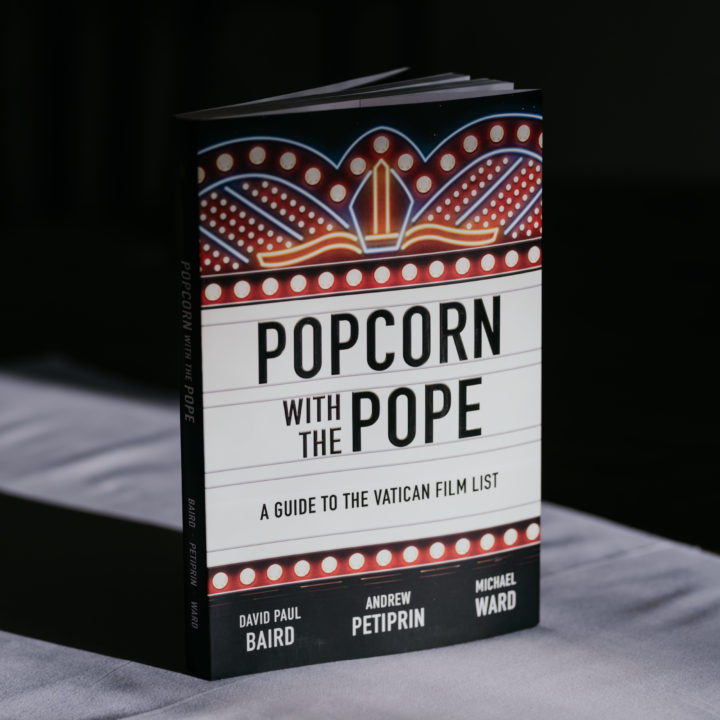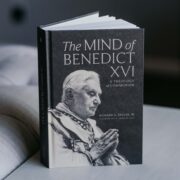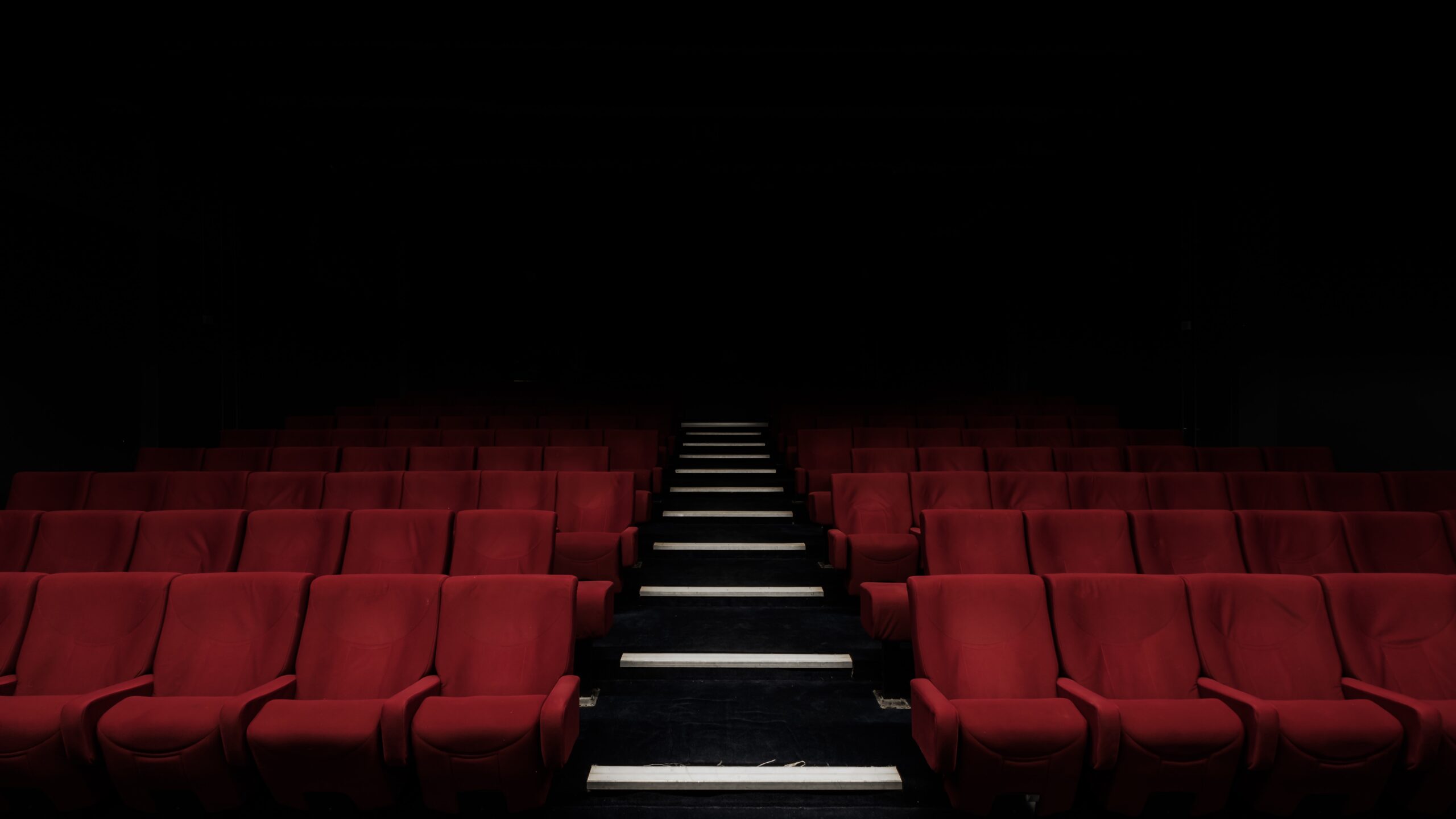
A literary feast for any movie lover, Popcorn with the Pope is a new release from Word on Fire by authors David Paul Baird, Andrew Petiprin, and Michael Ward.
This is the first ever in-depth analysis of Pope John Paul II’s list of forty-five significant films, ranging from light-hearted favorites like The Wizard of Oz to challenging arthouse features such as The Seventh Seal. The following is an analysis of the 1966 film, Andrei Rublev.
A masterpiece of spiritual filmmaking that has been described as the War and Peace of Russian cinema and the best art house film of all time, Andrei Rublev offers an impressionistic reflection upon art, morality, and faith in the context of Russia’s historically Orthodox Christian past. Divided into several poetically arranged episodes, the narrative follows the historical (albeit artistically reimagined) figure of Rublev as he moves across a medieval landscape peopled by fellow monks, feudal patrons, Tartar invaders, profligate pagans, and holy fools.
Across this extended, meditative film, he walks, he ponders, he talks to a few people, and then the film ends with a visual survey of some of his most celebrated works of art. This might not sound like much of a story, and in a certain sense it isn’t: the character of Rublev, who ties the project together, does not even appear in every vignette. It is nonetheless a powerfully suggestive piece of filmmaking.
It is so powerful, in fact, that it was initially banned from cinemas. As the state-sponsored production of an officially atheistic regime, Andrei Rublev immediately came under fire by Soviet-era Goskino censors and was proscribed after only one screening. What explains such an explosive reaction to a movie that some viewers today will likely regard as a slow-moving, relatively uneventful art piece?
The answer almost certainly has to do with the film’s perceived political implications, and some of its elements do, indeed, lend themselves to such interpretation. There is a prince, for instance, who, in a fit of petty jealousy, gouges out the eyes of a group of artisans to prevent them from creating something more beautiful for their next patron. If understood as a symbol of short-sighted and worldly governing authorities in general, this could be understood as offering a comment on contemporary times. A leader of the East German Communist Party apparently understood the film along these lines, asking how a picture could be made that showed the Russian people living under such abuse and neglect. It is an ironic comment, of course, given the film’s fifteenth-century (rather than twentieth-century) setting, but such extrapolation from past to present is not as far-fetched as it might seem. The film’s director, Andrei Tarkovsky, spoke openly about using the film’s historical material as an excuse to express his own ideas and address the issues of his age, and some of its first viewers seem to have taken this as the artistic equivalent of political dissidents demonstrating in Red Square.
Might the creatures before our eyes also be perceived like icons . . .
The real political heft of Andrei Rublev, though, is probably more oblique than such reactions suggest. According to intimates of Tarkovsky, the film is not fundamentally an expression of the director’s political opinions (apparently, he held almost none) but his lifelong search after a true spirituality—and it was this that, in a deep way, put the director at odds with the authorities and the established materialistic ideology of the Soviet regime.
Speaking about his aim in Andrei Rublev, Tarkovsky describes wishing to trace how the artist overcame the moral (rather than political) difficulties of his epoch. He describes Rublev’s art as striving to express a “noble peace, eternity, and harmony of the soul . . . [that] made it possible for him to create masterpieces, which will always remain relevant . . . [even] at a time when the life of the people was hopeless, when they were oppressed by a foreign yoke, by injustice, poverty.” Such comments apply just as readily to Tarkovsky’s own work, and it is very likely this aesthetic sensibility that tripped the censors’ alarm. Andrei Rublev is not a direct, thinly veiled critique of contemporaneous politics but a more profound, indirect, yet perhaps ultimately more powerful commentary on real beauty, which, as the radiance of goodness and truth, censures wrongdoing and falsehood wherever found.
The film’s opening spectacle of a primitive hot air balloon ride could be understood merely as setting the tone for an imaginative foray into times past, but given Tarkovsky’s metaphysical sensibility, it more plausibly suggests a launch away from strictly earthbound concerns. Such a heavenward trajectory continues across the trials of the artist-monk, then reaches a climax in a final extended meditation upon several of Rublev’s actual icons, in particular his most famous, a depiction of the Trinity modeled after the Old Testament story of the three supernatural visitors to Abraham and Sarah (Gen. 18). This survey finishes, penultimately, with an icon of Jesus Christ, and then cuts, ultimately and surprisingly, to photographic footage of horses standing in the rain.
This might seem like an odd, discontinuous ending, but it takes on a rich significance when considered in a wider cultural context. Whereas most of the religious art in the Latin West since the Renaissance has been secular in character, for Orthodox Christians, icons remain sacred; that is, they are regarded as visual analogues to Sacred Scripture. Unlike profane images designed merely to communicate at the level of information, the icon in this tradition prompts the weightier kind of consideration appropriate to divine revelation, which invites viewers to discern traces of transcendence in and beyond physical matter. Accordingly, while this kind of art can be appreciated from a nonreligious point of view, icons are “written” (not painted) with the intention of inviting viewers into an experience of adoration. This is worship not of the image in itself, but, in accordance with the distinction set out by the Second Council of Nicaea, worship that passes from the image to its prototype—namely, the Divine persons.
By following up the iconic meditation upon the Trinity with photographic footage of four horses—animals that play an important symbolic role in the film and are arranged here in a suggestive cluster of three and one—Andrei Rublev seems to conclude by asking whether such a naturalistic image, too, might be regarded iconologically. Does only sacred art facilitate this kind of contemplation of the Creator? Or might the creatures before our eyes also be perceived like icons, radiating timeless beauty in and through the stuff of earth?

If Andrei Rublev concludes by quietly encouraging such a world-transfiguring shift in perspective, the same kind of gaze can be directed retroactively to the other images in the film. Like Rublev’s iconic image of the Trinity, which adheres to the ancient custom of only depicting God the Father indirectly, so too this film’s images of a man on the road to holiness might be transformed into moving-picture-meditations upon eternity in time. Viewed in this light, Andrei Rublev himself becomes the fitting subject of spiritual meditation, a sanctified life that after much strain and trial has become luminous of the divine.
A striking echo of this perspective can be discerned in the film’s next-to-last sequence, which centers upon the casting of a monumental church bell. In this vignette, the stupendous physical exertions of a teenage bellmaker—digging the hole for a massive cast, erecting the primitive furnaces, smelting the enormous bell itself—become outward, concrete reflections of the spiritual tumult Rublev undergoes on the way to creating his own masterwork. They also represent the transformation of the artist himself. “In the beginning, Rublev’s belief was purely intellectual. It was the ideal he had been taught in the monastery,” Tarkovsky reflects. But “towards the end he believed more in the ideals of love and the brotherhood of men, only because he had been able to suffer for this ideal alongside his people. And from that moment on, which is the end of our film, this ideal becomes unshakeable for him. Nothing can tear him away from it.”
In Andrei Rublev, the artist who faithfully perfects his art—whether bellmaker, iconmaker, or, metacritically, filmmaker—becomes in the process a more perfect work of art himself, laboring and suffering to fashion ever more luminous images of the Artist beyond all artists, here in the midst of his most glorious work, creation.
From a holy human life to icons and horses standing in the rain, can we discover hints of divinity in the world around us? Is God’s splendor still detectable amidst our squalor and our repeated, at times programmatic, efforts to suppress and obscure it? These are some of the questions raised, quietly yet forcefully, by this film, which, as slowly as a river, carves grandeur out of the wasteland of an allegedly materialistic universe.
In an appendix to War and Peace, Tolstoy remarks how the sprawling shape of his novel comes directly from the decision to subordinate artistic form to the vision the book exists to communicate. Likewise, in Andrei Rublev, narrative becomes servant to a more urgent purpose, offering to audiences a cinematic pedagogy in a sanctified way of seeing. Such a marriage of form and function—an iconic depiction of a maker of icons—makes Andrei Rublev not only one of Russia’s great spiritual films but, indeed, one of humanity’s great works of art.
If you enjoyed David Paul Baird’s analysis of the film Andrei Rublev, you can discover more deep dives into the other forty-four films on Pope John Paul II’s list of recommended movies in Word on Fire’s Popcorn with the Pope.
The authors insightfully guide readers in an appreciation of cinema as an artistic language and a bearer of spiritual and moral messages.

